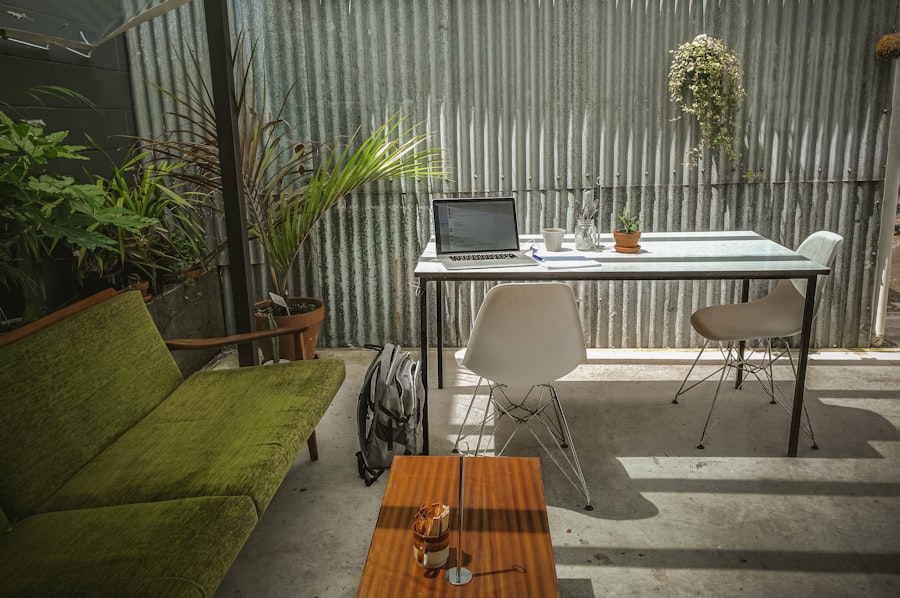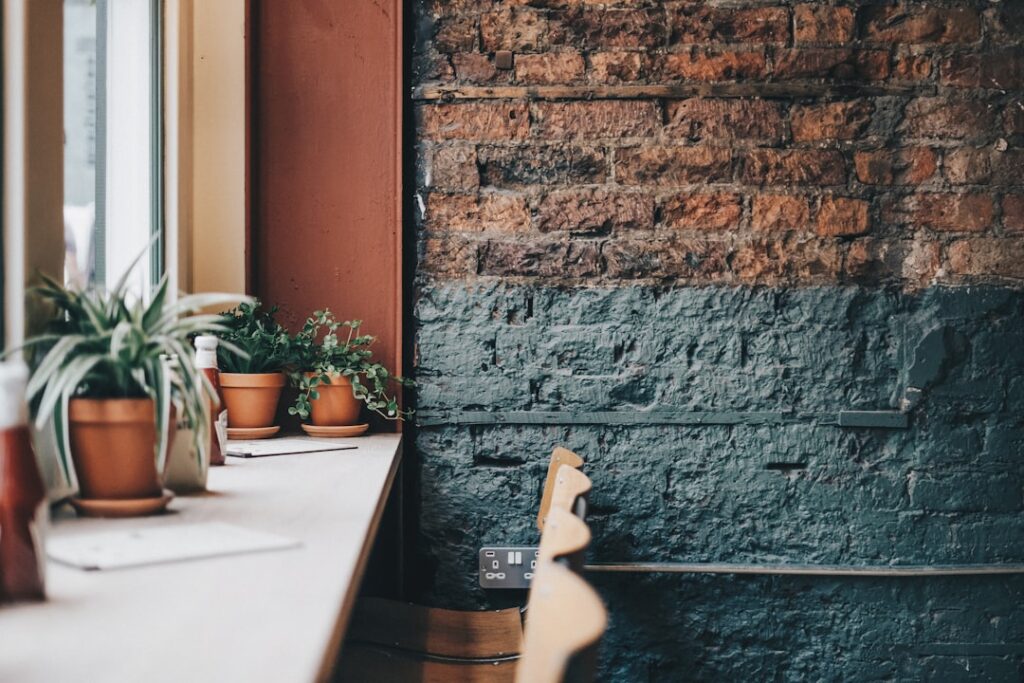The design of any workspace begins with a clear understanding of its purpose. This foundational step is crucial as it informs every subsequent decision, from layout to aesthetics. A workspace can serve various functions, such as fostering creativity, enhancing productivity, or facilitating collaboration among team members.
For instance, a tech startup may prioritize open spaces that encourage brainstorming and innovation, while a law firm might require more private offices to ensure confidentiality and focus. By identifying the primary objectives of the space, designers can create an environment that aligns with the organization’s goals and culture. Moreover, understanding the purpose of the space extends beyond mere functionality; it also encompasses the emotional and psychological needs of its occupants.
A well-designed workspace should inspire employees, making them feel valued and motivated. For example, incorporating areas for relaxation or informal gatherings can help reduce stress and promote a sense of community among staff. By considering both the practical and emotional aspects of the workspace, designers can create an environment that not only meets operational needs but also enhances employee well-being and satisfaction.
Key Takeaways
- Understanding the purpose of the space is crucial for designing a functional and effective workspace.
- Incorporating brand identity into the design helps create a cohesive and representative environment for employees and clients.
- Maximizing natural light in the workspace can improve mood, productivity, and overall well-being of employees.
- Creating functional workspaces that cater to the specific needs of employees can enhance efficiency and satisfaction.
- Utilizing biophilic design elements such as plants and natural materials can improve air quality and create a calming atmosphere.
Incorporating Brand Identity
Reflecting Core Values
For instance, a company that prides itself on sustainability might incorporate eco-friendly materials and energy-efficient systems into its office design. This not only reinforces the brand’s commitment to environmental responsibility but also creates a sense of pride among employees who share these values.
Visual Storytelling
Incorporating brand identity can also be achieved through color schemes, artwork, and signage that reflect the company’s personality. A vibrant tech company may opt for bold colors and modern art installations to convey innovation and creativity, while a financial institution might choose a more subdued palette with classic artwork to evoke trust and stability.
Creating a Cohesive Environment
By thoughtfully integrating brand elements into the workspace, organizations can create an environment that not only looks appealing but also communicates their core values and mission to everyone who enters.
Maximizing Natural Light

Natural light is a critical component of effective workspace design, as it has been shown to enhance mood, productivity, and overall well-being. Research indicates that exposure to natural light can reduce eye strain, improve sleep quality, and even boost creativity. Therefore, maximizing natural light should be a priority for designers when planning office layouts.
This can be achieved through strategic placement of windows, skylights, and glass partitions that allow light to flow freely throughout the space. In addition to improving employee health and productivity, natural light can also contribute to energy efficiency. By reducing reliance on artificial lighting during daylight hours, organizations can lower their energy costs and minimize their environmental impact.
For example, an office designed with large windows and open floor plans can harness sunlight effectively while creating a bright and inviting atmosphere. Furthermore, incorporating reflective surfaces such as mirrors or light-colored walls can help distribute natural light more evenly across the workspace, enhancing its overall brightness.
Creating Functional Workspaces
A functional workspace is one that supports the diverse activities employees engage in throughout their workday. This includes not only traditional desk work but also meetings, collaborative projects, and individual tasks that require concentration. To create such an environment, designers must consider various factors such as layout, acoustics, and technology integration.
For instance, incorporating flexible workstations that can be easily reconfigured allows teams to adapt their space based on their current needs. Moreover, functional workspaces should also address the importance of privacy and noise control. Open-plan offices can often lead to distractions; therefore, incorporating sound-absorbing materials or designated quiet zones can help mitigate this issue.
Additionally, providing access to meeting rooms equipped with audio-visual technology ensures that teams can collaborate effectively without disrupting others. By prioritizing functionality in workspace design, organizations can create an environment that enhances productivity while accommodating the diverse needs of their employees.
Utilizing Biophilic Design
Biophilic design is an approach that seeks to connect people with nature within built environments. This design philosophy is based on the premise that incorporating natural elements into workspaces can significantly enhance employee well-being and productivity. Elements such as indoor plants, water features, and natural materials can create a calming atmosphere that reduces stress and fosters creativity.
For example, a company might choose to include living walls or green roofs in its office design to bring nature indoors. In addition to aesthetic benefits, biophilic design has been shown to have tangible impacts on employee performance. Studies indicate that workplaces featuring natural elements can lead to increased job satisfaction and reduced absenteeism.
Furthermore, biophilic design encourages movement within the workspace; for instance, placing plants strategically throughout the office can prompt employees to take short walks for a mental break. By embracing biophilic principles in workspace design, organizations can cultivate an environment that nurtures both physical health and mental clarity.
Incorporating Collaborative Spaces

In today’s dynamic work environment, collaboration is essential for fostering innovation and teamwork. Therefore, incorporating collaborative spaces into office design is crucial for promoting interaction among employees. These spaces can take various forms, including open lounges, breakout rooms, or dedicated brainstorming areas equipped with whiteboards and technology for group discussions.
The key is to create environments that encourage spontaneous interactions while also providing areas for more structured collaboration. Moreover, collaborative spaces should be designed with flexibility in mind. Movable furniture allows teams to reconfigure their surroundings based on their specific needs at any given moment.
For instance, a group working on a project may require a large table for discussions one day but prefer smaller seating arrangements for brainstorming sessions the next. By providing versatile collaborative spaces that cater to different working styles and preferences, organizations can enhance teamwork and drive creative problem-solving.
Choosing the Right Furniture and Accessories
The selection of furniture and accessories is a critical aspect of workspace design that directly impacts both functionality and aesthetics. Ergonomic furniture is essential for promoting employee comfort and health; adjustable desks and supportive chairs can help prevent musculoskeletal issues associated with prolonged sitting. Additionally, choosing furniture that reflects the brand’s identity—such as custom-designed pieces or those made from sustainable materials—can further enhance the overall atmosphere of the workspace.
Accessories also play a significant role in creating an inviting environment. Items such as artwork, plants, and personal touches can make a space feel more welcoming and reflective of the company culture. For example, displaying employee achievements or incorporating local art can foster a sense of pride among staff members while reinforcing community ties.
Thoughtfully selected furniture and accessories not only contribute to the visual appeal of the workspace but also support employee engagement and satisfaction.
Embracing Technology in Design
Incorporating technology into workspace design is no longer optional; it has become essential for enhancing productivity and collaboration in modern offices. From advanced communication tools to smart building systems that optimize energy use, technology plays a vital role in creating efficient work environments. For instance, integrating video conferencing capabilities into meeting rooms allows teams to connect seamlessly with remote colleagues, fostering inclusivity regardless of location.
Moreover, technology can enhance the overall user experience within the workspace. Smart lighting systems that adjust based on occupancy or time of day can improve energy efficiency while creating a comfortable atmosphere for employees. Additionally, mobile apps that facilitate room booking or provide access to resources can streamline operations and enhance convenience for staff members.
By embracing technology in workspace design, organizations can create environments that are not only functional but also adaptable to the evolving needs of their workforce.
If you are looking to revamp your office space with stylish furniture, you may want to consider incorporating modern executive office desks. These desks not only add a touch of sophistication to your workspace but also provide functionality and comfort for employees. To maximize productivity in your office, it is essential to carefully plan the workstation layout. This article on workstation layout for productivity offers valuable insights and tips on how to design an efficient and ergonomic workspace that promotes focus and efficiency.
FAQs
What is office interior design?
Office interior design is the process of creating a functional and aesthetically pleasing work environment. It involves planning and designing the layout, furniture, color scheme, lighting, and overall ambiance of the office space.
Why is office interior design important?
Office interior design is important because it can significantly impact the productivity, morale, and well-being of employees. A well-designed office space can also create a positive impression on clients and visitors.
What are the key elements of office interior design?
Key elements of office interior design include space planning, furniture selection, lighting design, color scheme, flooring, and overall aesthetic appeal. It also involves considering the specific needs and functions of the office, such as meeting rooms, workstations, and communal areas.
What are the current trends in office interior design?
Current trends in office interior design include open floor plans, flexible workspaces, biophilic design (incorporating natural elements), ergonomic furniture, and sustainable materials. There is also a focus on creating collaborative and social spaces within the office.
How does office interior design impact employee productivity?
Well-designed office interiors can positively impact employee productivity by creating a comfortable and inspiring work environment. Factors such as natural light, comfortable furniture, and a well-organized layout can contribute to a more efficient and focused workforce.


